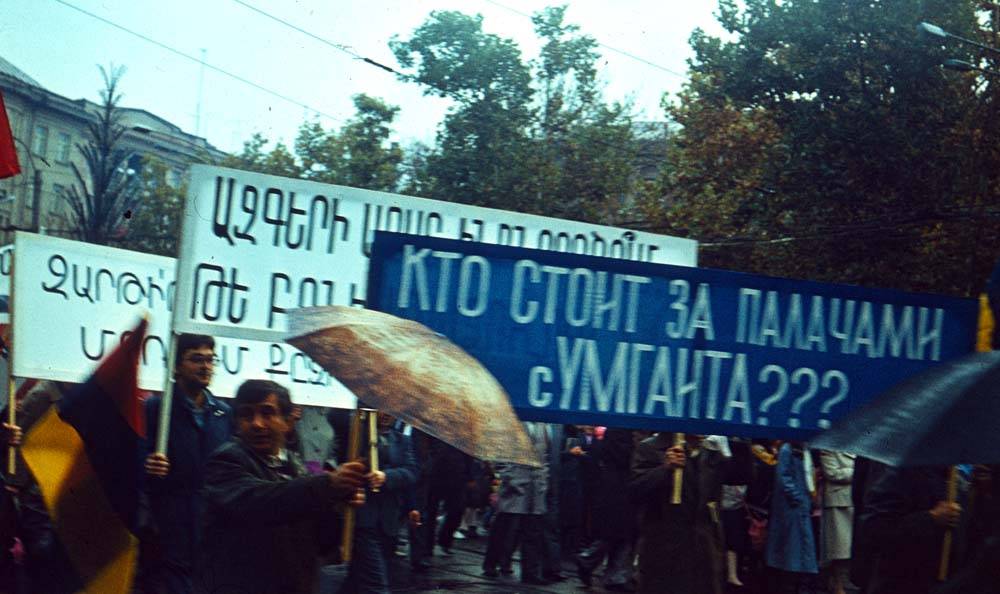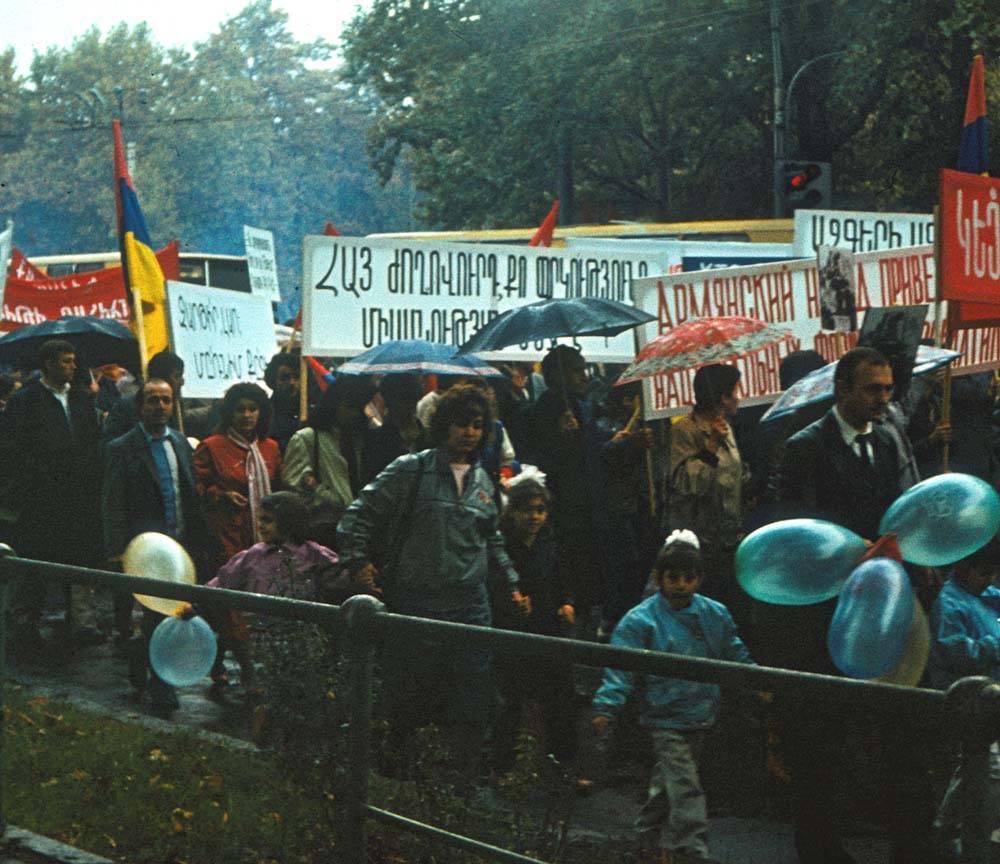“Wake up, lao…”
In comparison to April of the same year , the situation of November, 1988 was different. The supreme government of The Soviet Union did not give political value to Sumgait events, the trial towards the murderers was compared with buffoonery. In order to solve the Karabakh conflict fairly, some hunger-strikes took place and were taking place , people had passed into political peaceful striking ways of struggle. “Zvartnots” events and Khojalu conflicts were included, demonstrations and rallies became more and more crowded, political struggle was acquering new organizational shades and so on.
So, on the basis of this during the last “Soviet” parade on November 7th, people appeared with the poster “wake up, lao, mernim kezi” in their hands. (p. 93, 199)

This line is a part of the rich section of freedom fighting songs: one of the fedayeen songs, which had an interesting fate. It was written on the basis of history and was dedicated to one of the first Armenian fedayens, Arabo (1863-1893), but, that circumstance, which was also shown in the headlines: “Arabo’s song”, “The brave Arabo’s song”, “Mshetsi’s song, “Wake up, lao” and so on was forgotten in its future usage. The original version of the song, which was first published in 1898, was attributed to the composer Fahrat. Song’s hero, Arabo, who was a famous fedayeen, and was acting with his group in Sasun and Taron regions died on the way from Khnus to Mush, during unequal battles against Kurdish gags. In the song, he is not accepted as a real historical personality anymore, rather he appears as a symbol of freedom fighter.

“Arabo’s song” is composed like traditional lullabies, only with another purpose: to wake up the child-lao, to call him to weapon. The central figure of the lullaby is the mother. She tells her son about the miserable situation of Armenians, and calls to weapon, scolds him for his vain hopes and for missing the proper opportunity. Mentioning Arabo, she persuades her son to follow the beloved hero’s example: fight for country’s freedom. The main idea of the song is revealed in the line “wake up, lao…”, which is a call for fighting directed to all the Armenians. This song has various versions and was one of the most common and loved songs in Soviet Union as well, especially after 1967, when it was sounded in the movie “Triangle”.
Part from Harutyun Marutyan’s “Pictogragraphy of Armenian identity, volume 1: “The Memory of Genocide and the Karabakh Movement” book (The process of reassessing the past and future in the Armenian identity: chapter 6,Yerevan, 2009).
Source: hambardzum.am website archive
Translator: Lianna Sargsyan © All rights are reserved.








